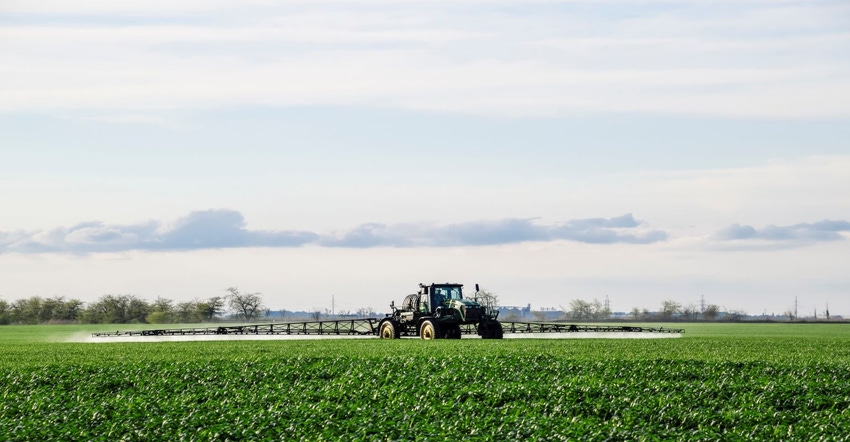June 9, 2022

Postemergence herbicide application season is already upon us in much of Iowa, but with the delayed crop planting in some areas, it may extend through much of the month of June. Herbicide application timing should always focus on the sizes of weeds targeted but remember that many products use crop growth stage and calendar date as application restrictions.
All applicators should be aware of resources available to look up pesticide labels like www.greenbook.net or www.cdms.net/label-database. These websites allow users to read pesticide labels and even search for terms to quickly find label-specific information that may be important to their application.
Crop Stage and Height Restrictions
Most herbicide labels list specific growth stages for corn or soybean that describe the upper size limit for treating these crops. Some products used in corn may also state height restrictions. In the case of labels that note both stage and height, the most restrictive of the two should be followed. Several universities keep updated lists of crop growth stage or height restrictions for herbicide applications like this recent article from Purdue University weed scientists. These restrictions may exist for several reasons like crop tolerance, environmental, or residual concerns. Some newer herbicides, like the dicamba products for over-the-top applications in soybean have a date cutoff in Iowa of June 20, so applications must cease after that date regardless of crop stage.
To determine the growth stage of corn, the “V” stage is determined by the number of leaves with visible leaf collars. If a corn herbicide label notes a height restriction, measure the plant height from the soil surface to the arch of the uppermost leaf that is at least 50% expanded.
Count soybean growth stages by the number of trifoliate leaves that are fully expanded; a field of soybeans at V1 means that 50% of the plants have one fully expanded trifoliate leaf. Many soybean herbicides describe a cutoff timing of early reproductive growth stages rather than vegetative stages. While soybeans continue developing leaves during reproductive stages, we count a plant as R1 when it has one open flower anywhere on the plant.
Read more about corn growth staging here and soybean growth staging here.
Crop Rotation Restrictions
Finally, as applications may be happening later in June or into July than normal due to late planting, applicators should pay close attention to the rotation restrictions noted on labels. Late applications residual herbicides may be more likely to result in injury the following spring to the next crop. In particular, fomesafen products have a 10-month rotation interval to corn due to its persistence and propensity to cause injury, especially when rainfall is limited following application.
Summary
Paying close attention to the crop growth stage, height, and other restrictions on labels will make herbicide applications more successful and avoid unnecessary problems this growing season (and maybe next year, too!).
About the Author(s)
You May Also Like






